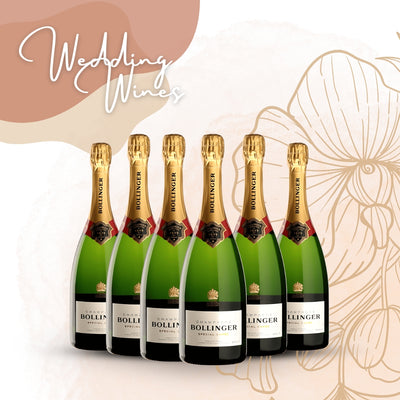7 Essential Facts About Italian Wine
Text: Dakki Kong
It’s not a surprise if you’re intimidated by the lengthy wine terms appearing on the Italian wine labels. Who’d have thought it takes no time to understand over 300 regional wines, more than 2000 grape varietals and 4000-year wine history. Let’s start with the basics!
‘DOC’ VS ‘DOCG’
Similar to the ‘AOC’ of the French classification system, the Italian wine designation ‘DOC’ is referring to a set of rules governing wine quality, such as the restrictions on the choice of local grapes, winemaking methods, ageing time and alcohol level, which differ from region to region. Therefore, a DOC wine is always guaranteed quality. However, some outstanding estates might find their quality is superior to the wines of the existing 300 DOC regions. That’s why DOCG is established to identify higher quality, such as ‘Barolo DOCG’ and ‘Barbaresco DOCG’.
'Super Tuscan'
The birth of Super Tuscan is a story of revolution. In the 50s and 60s, the winemakers in Tuscany tried to create a breakthrough by planting exotic grapes such as Cabernet Sauvignon and Merlot and adding them to the existing reds, followed by ageing in new oak barrels. The rich and full-bodied creation thrilled every drinker and swiftly rocked the region. Acclaimed by a number of international wine critics, the style was named ‘Super Tuscan’ and some of the iconic creations like LUCE, Tignanello, Sassicaia and Ornellaia shot to fame. The superb quality stormed and dominated the overseas market in the 80s. Thanks to its global popularity that even rebranded Italy as a nation producing high-quality wines. The well-renowned Italian wine merchant Frescobaldi is also one of the Super Tuscan producers. Try their Super Tuscans such Tenuta di Castiglioni and Mormoreto.
‘Classico’
Those Italian wines with the word ‘Classico’ on its label usually costs you more money than those without the word*, such as ‘Soave’ and ‘Soave Classico’, and ‘Chianti’ and ‘Chianti Classico’. In fact, ’Classico’ represents wines made with grapes that are more original, better and inevitably from hilly part of the region. For example, to be classified as ‘Chianti Classico’, the wine is required to use at least 80% of Sangiovese and meet the limitation on the harvest yield per acre and alcohol level. Interested to take a sip? Look for the black chicken icon a.k.a. ‘Gallo Nero’ on the label.
*In those traditional regions
Italian Bubbly 'Prosecco'
If it’s not from Champagne, it’s not a Champagne. In Italy, the most popular bubbly drink is Prosecco. The sparkling wine is full of vibrant fruitiness with medium acidity and off-dry taste, though not delicate and yeasty as Champagne. The good news is its price tag is always reassuring. That’s why it’s served as a daily drink to the Italians. ‘Prosecco DOCG’ is a massive land located in Northern East Italy. If you want something more premium, go for 'Conegliano-Valdobbiadene Prosecco DOCG’.
‘Superiore’
‘Superiore’ is usually found next to the regional name on a wine label. The term indicates wine production from a smaller harvest resulting in a wine with a slightly higher alcohol level.
‘Riserva’
Some estates, after a new vintage is launched, would bottle a ‘Riserva’ wine in the following vintage. ‘Riserva’ represents a wine with longer ageing and a higher alcohol level. But the period of time it must be aged in barrels is subject to the regional requirements. Take ‘Chianti’ as an example. It’s required to age in barrels for six to twelve months prior to bottling, while ‘Chianti Riserva’ is required to age for two years.
Drinking around Italy
The boot-shaped Italy cultivates diversity in grapes varietals and the wine styles vary from the North to the South. So where to find your own favourite wine?In general, Italian red wines tend to be earthy in Northern Italy and they tend to be fruitier towards the South. If you’d prefer the rustic and earthy tone, try grape varietals such as Nebbiolo, Sangiovese and Barbera. If you’re into the fruit-forward flavour, savour the Negroamaro, Nero d’Avola and Primitivo. For the fans of the whites, the most popular Pinot Grigio, Soave and Gavi definitely bring you a refreshing spirit.





